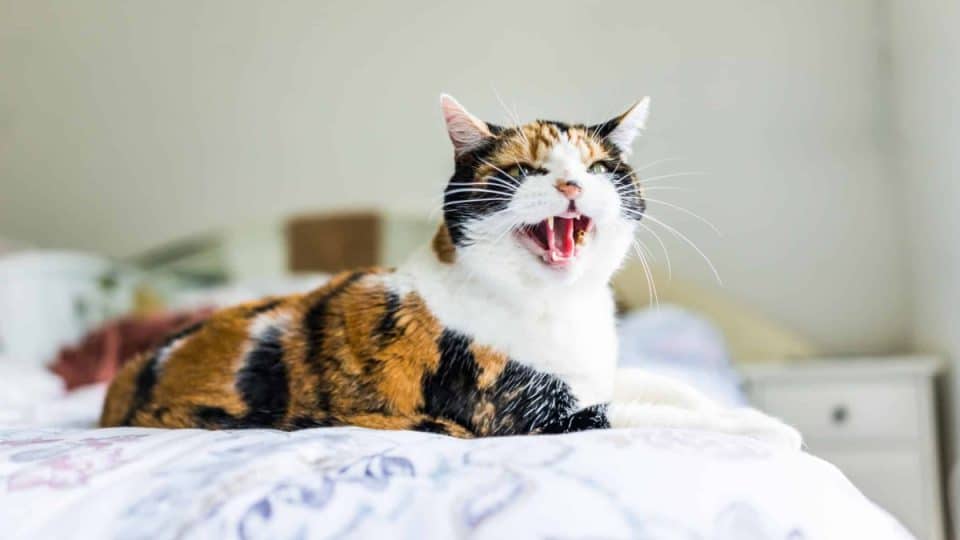Cats are generally quiet and independent creatures, but when they do make noise, it’s usually a clear indication that something is wrong. Hissing or growling are not just random sounds—they serve as warning signals. Understanding why cats exhibit these behaviors can help you address their needs and create a more harmonious environment. In this blog post, we’ll explore the common reasons cats hiss or growl and how you can help your feline friend feel more comfortable.
Reasons Why Cats Hiss or Growl
- Fear or Anxiety: Cats often hiss or growl when they feel scared or threatened. This could be due to encountering unfamiliar people, animals, or new environments. Loud noises, sudden movements, or stressful situations can trigger this defensive behavior as well. It’s their way of saying, “Stay back!”
- Territorial Behavior: Cats are territorial animals, and they may hiss or growl if another cat, pet, or even a person enters their personal space. This behavior is more common if the cat feels that their territory is being invaded or challenged, especially in multi-pet households.
- Pain or Discomfort: If your cat suddenly starts hissing or growling when touched, it might be a sign of pain. Injuries, illnesses, or even long-term conditions like arthritis can cause physical discomfort. Cats are good at hiding pain, so hissing might be one of the few outward signs they display. A sudden change in behavior always warrants a visit to the vet to rule out any underlying medical issues.
- Overstimulation: Have you ever noticed your cat enjoying a petting session, only to suddenly hiss or growl? This is often due to overstimulation. While cats may enjoy physical affection, there is a threshold where they can feel overwhelmed. This can lead to a defensive hiss, signaling that they need a break from contact.
- Aggression: Cats may hiss or growl as a precursor to aggressive behavior. This usually happens when they feel cornered or threatened and are preparing to fight. In this situation, giving them space is crucial, as pushing further could lead to biting or scratching.
- Protective Instinct: Mother cats often hiss to protect their kittens. They may also growl if they perceive a threat nearby. This is a natural instinct to safeguard their offspring from potential dangers.
How to Help Your Cat When They Hiss or Growl
- Give Them Space: When a cat hisses or growls, it’s important to give them the space they need. Never force interaction with a stressed or fearful cat. Allow them to retreat to a safe, quiet space where they can calm down. Forcing contact may escalate the situation.
- Identify Triggers: Pay attention to the circumstances that cause your cat to hiss or growl. Are they reacting to a specific person, another pet, or a particular environment? Identifying the triggers can help you prevent future incidents. For example, if they hiss at other animals, ensure gradual introductions or create separate spaces for each pet.
- Provide Safe Spaces: Cats feel more secure when they have a safe place to retreat. Make sure your cat has access to quiet, secluded areas in your home where they can relax. This can reduce their anxiety and decrease the chances of hissing or growling episodes.
- Check for Health Issues: If your cat’s behavior changes suddenly, a visit to the vet is crucial. Cats may hiss or growl if they’re experiencing pain or discomfort from a medical condition. By addressing any health issues, you can ensure your cat is physically comfortable and less likely to exhibit defensive behaviors.
- Respect Their Boundaries: Learn to recognize the signs that your cat is becoming overstimulated. If their tail starts to flick, their ears flatten, or they start shifting away, it’s time to stop petting. Respecting their limits will prevent hissing and help build a trusting relationship.
- Seek Professional Help for Aggression: If your cat frequently hisses or growls and shows signs of aggression, consider consulting a feline behaviorist. A professional can help you understand the root cause of the aggression and provide techniques for managing it in a way that reduces stress for both you and your cat.
Final Thoughts
Cats communicate through vocalizations like hissing and growling to express discomfort, fear, or territorial instincts. By learning to understand these signals, you can create a more supportive and calming environment for your pet. Whether it’s reducing stressors, addressing health issues, or giving your cat space when needed, being in tune with their needs will help reduce these behaviors and strengthen your bond with your feline companion.
